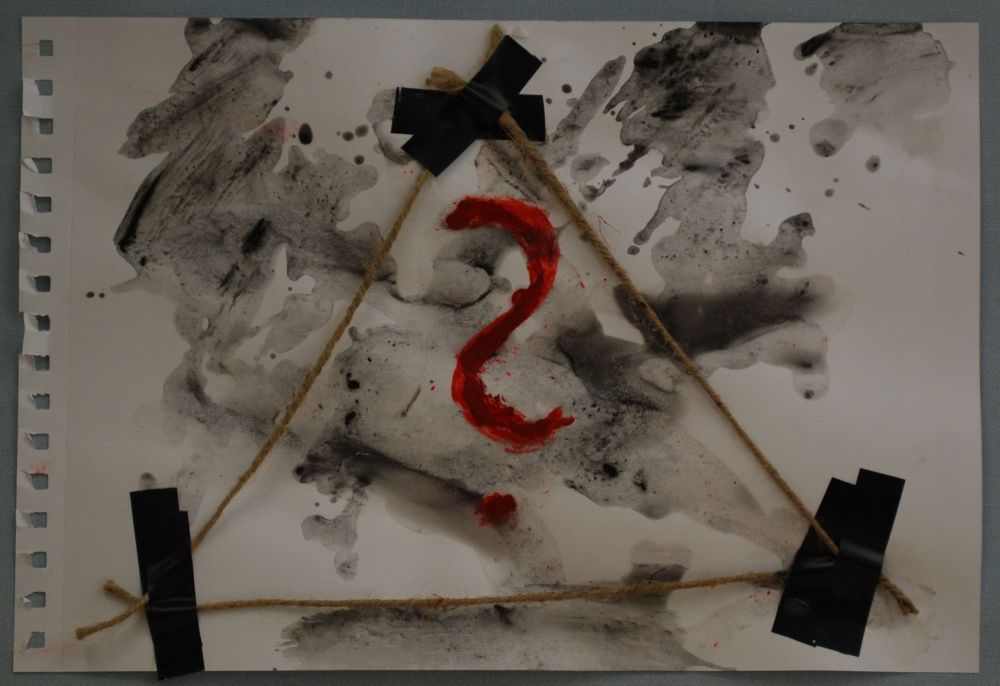Text: Editorial team | Section: On ‚Art and Science‘
In this section we will publish and answer some of our reader’s questions that might be of interest to other users of our online-journal.
Anonymous Question: Browsing the art featured by w/k I find that I can’t always see a connection to science. Take for example Meral Alma’s figures and dancers – in how far is her work informed by scientific methods? The same thing can be said about a naked lady’s backside next to a garden-gnome – I can’t see any relation to scientific research. To be clear, I’m not criticizing the artistic merit of these works. Rather, I’m wondering about the selection-criteria. Why does the online-journal feature works that have nothing to do with science?
![Left: Meral Alma: o.T. [untitled] (2015). Photo: Meral Alma. Right: Rissa: Schneewittchen [Snow White] (1965). Photo: I. Daum.](https://between-science-and-art.com/wp-content/uploads/sites/4/2018/07/ME-R-640x419.jpg)
Editor’s Answer: w/k is concerned with all connections between science and (visual) arts – and some additional topics we have outlined in our program. There are two basic types of individual connections between science and art (the collective connections can be disregarded here):
Type 1: An artist refers to scientific theories and/or methods in at least some of his works; we call these artists science-related artists or artists working in relation to science. See for example w/k’s first publications with articles on Marcus Ahlers, Anna Lena Grau, Mischa Kuball and Detlev van Ravenswaay. Further publications featured Tinka Bechert, Hugo Boguslawski, Swaantje Güntzel, Barbara Herbert, Ryo Kato und malatsion. These articles are about art that is in one way or the other directly related to science.
On Border Crossers
Type 2: An individual works in science as well as in art; in these cases we talk about border crossers between these two worlds. See for example w/k’s first publications with articles on Marcus Ahlers, Meral Alma, Karl Otto Götz/Rissa, Markus Schrenk and Peter Tepe. Further publications featured Gerhard Daum and Leonardo da Vinci.
There are different types of border crossers; while some of them produce mainly or exclusively science-related art (Marcus Ahlers, Gerhard Daum, Markus Schrenk), others really don’t (Meral Alma, Karl Otto Götz, Rissa). Peter Tepe holds an intermediate position: some of his works are science-related, others are not.
The deciding factor is this: Because border crossers count among the connections between science and art that are of interest to w/k, their works will be featured even if they aren’t strictly science-related. Take Meral Alma for example. She works as an artist and as a literary scholar; she is a border crosser and as such her artistic practice is of interest to w/k.
The interview with Götz/Rissa was about scientific research conducted by artists; on this background the actual artworks are of secondary importance. Because both are border crossers, presenting their works would be legitimate even if according to their own words the works aren’t strictly science-related.
It is certainly possible to publish an online-journal that concentrates on science-related art exclusively – or even more specifically, features only BioArt or SpaceArt. But this would be a different concept. Leonardo da Vinci can count as the forefather of border crossers and some of our editors have a specific interest in featuring and examining them and their works. This requires a special interest in the works of border crossers even when their art is not science-related.
You can find a provisional list of all connections between art and science under Connections between Science and (Visual) Arts
Image above text: Peter Tepe: Fragezeichen im Dreieck [Question Mark within Triangle] (2017). Photo: Moritz Niehues. Mixed media on paper, 20 x 30 cm.
How to cite this article
w/k-Redaktion (2018): Ask the w/k-Editors 1. w/k–Between Science & Art Journal. https://doi.org/10.55597/e2977


Be First to Comment